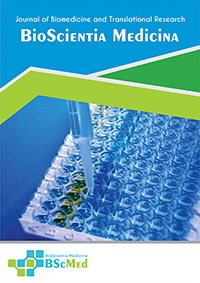Main Article Content
Abstract
Background: Chronic wounds represent a significant clinical burden. Autologous platelet-rich plasma (PRP) is an effective but patient-limited therapy. Xenogenic PRP (xPRP), derived from animal sources, offers a potential off-the-shelf, scalable alternative. This review synthesizes the current preclinical and early clinical evidence on the efficacy and safety of xPRP for wound healing.
Methods: A systematic search was conducted in PubMed, Scopus, ScienceDirect, and Google Scholar up to July 2025, with no publication date restrictions, following PRISMA guidelines. Studies evaluating xPRP on wound healing outcomes in in vivo, in vitro, or ex vivo models were included. Two independent reviewers performed study selection, data extraction, and risk of bias assessment using the SYRCLE tool for animal studies and a modified QUIN tool for in vitro studies. Data were synthesized narratively due to heterogeneity.
Results: Eleven studies met the inclusion criteria, comprising ten animal and three in vitro investigations (two studies reported both components). Evidence from porcine, bovine, and deer xPRP sources consistently demonstrated significant improvements in wound closure rates, re-epithelialization, angiogenesis, and collagen deposition compared to saline controls. Porcine xPRP, for instance, accelerated wound closure by up to 45% over controls in diabetic rodent models. However, when compared to autologous PRP, xPRP generally showed slightly inferior, though still positive, outcomes. Immunogenic responses were minimal and localized, with no systemic adverse events reported. Risk of bias assessment revealed that while most studies had clear objectives, many were at high risk of bias due to a lack of randomization, allocation concealment, and blinded outcome assessment.
Conclusion: Xenogenic PRP demonstrates considerable promise as a bioactive therapeutic for wound healing, promoting key regenerative processes with a reassuring preliminary safety profile. However, the current evidence base is limited by methodological inconsistencies and a high risk of bias. Future research must prioritize standardized preparation protocols and methodologically rigorous, large-animal and human clinical trials to validate its translational potential.
Keywords
Article Details
As our aim is to disseminate original research article, hence the publishing right is a necessary one. The publishing right is needed in order to reach the agreement between the author and publisher. As the journal is fully open access, the authors will sign an exclusive license agreement.
The authors have the right to:
- Share their article in the same ways permitted to third parties under the relevant user license.
- Retain copyright, patent, trademark and other intellectual property rights including research data.
- Proper attribution and credit for the published work.
For the open access article, the publisher is granted to the following right.
- The non-exclusive right to publish the article and grant right to others.
- For the published article, the publisher applied for the Creative Commons Attribution-NonCommercial-ShareAlike 4.0 International License.





